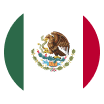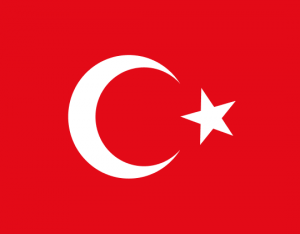Six eCommerce strategy tips for Mother’s Day and Father’s Day
Mother’s Day and Father’s Day offer the perfect opportunity to boost sales and grow your brand – so take advantage with carefully planned strategies tailored to customer tastes and preferences in different countries and regions.

Mother’s and Father’s Day are unique because the holidays fall on varying days worldwide. This is great news for e-commerce sellers and retailers, as they get more opportunities to promote their products to different audiences.
Traditionally, families exchange cards and chocolates, but recent retail trends indicate that people are splashing out on unique gifts more focused on their parents’ interests and tastes. For example, in the US, clothing is the second-most popular gift idea for Father’s Day, a quarter of US shoppers buy concert and event tickets, and 37% of online shoppers send subscription boxes to their nearest and dearest to mark the occasion.
So, if you’re an eCommerce seller, don’t rest on these public holidays in your annual marketing push, as there are plenty of ways to promote your brand. Here are our top tips for building an effective international eCommerce strategy for Mother’s Day and Father’s Day.
How does Mother’s Day spending differ to Father’s Day?
Spending patterns on Mother’s Day and Father’s Day differ significantly. For instance, Australians spent AUD $754 million on Mother’s Day gifts, compared with just AUD $735 million lavished on Father’s Day in 2022.
Retail trends further afield paint a similar picture. In the same year, Americans spent $31.7 billion on Mother’s Day gifts compared to $20 billion for Father’s Day. Similarly, in the UK, 2022 Mother’s Day purchases reached approximately £1.34 billion, with Father’s Day totalling only £986 million.
For eCommerce sellers, these figures suggest that you may wish to invest more of your marketing budget towards Mother’s Day rather than Father’s Day. However, the emphasis will ultimately depend on the types of customers you focus on throughout the rest of the year.
Your eCommerce strategy for Mother’s Day and Father’s Day
1. Know your celebration dates
Here is a reminder of the 2023 Mother’s Day and Father’s Day celebration dates around the world:
- Mother’s Day (Australia): Sunday, 14 May
- Father’s Day (Australia): Sunday, 3 September
- Mother’s Day (France): Sunday, 4 June
- Father’s Day (France): Sunday, 18 June
- Mother’s Day (Germany): Sunday, 14 May
- Father’s Day (Germany): Thursday, 18 May
- Mother’s Day (Netherlands): Sunday, 14 May
- Father’s Day (Netherlands): Sunday, 18 June
- Mother’s Day (Singapore): Sunday, 14 May
- Father’s Day (Singapore): Sunday, 18 June
- Mother’s Day (UK): Sunday, 19 March
- Father’s Day (UK): Sunday, 18 June
- Mother’s Day (USA): Sunday, 14 May
- Father’s Day (USA): Sunday, 18 June
If you sell in multiple regions, create multiple promotional campaigns (both for Mother’s Day and Father’s Day) to make sure you capitalise on all the opportunities these occasion days generate. For example, if you are an Australia-based brand targeting UK Mother’s Day audiences, you will need to create two separate campaigns months in advance, one for UK buyers and one for Australian customers.
2. Get your supply chain in order
Find suppliers that can cater to your product needs and logistics cycles – especially for earlier celebrating markets like the UK.
With a World Account, businesses can easily open 10 local currency accounts and accept payments in their customers’ preferred currency. Sellers can also make same-day or next-day money transfers to suppliers, including payments to China.
3. Start early and localise
Check out regional search trends to find popular products your customers are looking to exchange.
Google Trends data reveals the top searches related to each celebration are:
- Mother’s Day (Australia): hampers, gift boxes, and flower delivery
- Father’s Day (Australia): gift boxes, personalised gifts, and cards
- Mother’s Day (France): gift baskets, lunch, and coupons
- Father’s Day (France): gifts and cards
- Mother’s Day (Germany): cards and gifts
- Father’s Day (Germany): socks, cards, and gifts
- Mother’s Day (Netherlands): cards and crafts
- Father’s Day (Netherlands): cards and gifts
- Mother’s Day (Singapore): Table d’hôte, hampers, and florists
- Father’s Day (Singapore): cake, cards, and crafts
- Mother’s Day (UK): cards, spa days, and flowers
- Father’s Day (UK): baby grows, hampers, and cards
- Mother’s Day (USA): gift baskets, brunch ideas, and crafts
- Father’s Day (USA): mugs, cards, and crafts
If you find that your store doesn’t precisely align with seasonal search trends, don’t worry. You can find ways to create bundles or hampers for your Mother’s Day/Father’s Day customers. Or, you can add personalised print-on-demand services to help give your existing products a seasonal greeting.
- Open 15+ local currency accounts and get paid like a local
- Pay suppliers, partners and staff worldwide in 100+ currencies
- Collect payments for free from 130+ marketplaces and payment gateways, including Amazon, Etsy, PayPal and Shopify
- Take control of spending with the World Card, a business expense card that saves you more with 1% cashback. Learn more
- Save with competitive exchange rates on currency conversions and transfers
- Lock in exchange rates for up to 24 months for cash flow certainty
4. Make new marketing assets
Many shoppers start looking for gifts approximately two to three weeks before the holidays. In addition, as mentioned previously, Father’s Day spending falls below Mother’s Day expenditure. With that in mind, it may be best to plan Mother’s Day campaigns to run for a slightly longer period, as shoppers have been shown to spend more time planning for this holiday.
To ensure you’re prepared for the uptick in site visits, design new banner advertisements, apply seasonal discount codes to your site’s back end and create social media campaigns.
Having dedicated marketing assets, like images and seasonally appropriate copy, helps customers narrow down their options and make a purchase. Furthermore, 55% of consumers said they would interact with a brand on social media if the seller offered a Mother’s Day sales incentive, making this holiday an excellent opportunity to boost your social media following long-term.
Consider differentiating these regional campaigns to suit your audience’s preferences. For instance, if you see more social media engagement from your customers in France, set up a dedicated social media channel for your French Mother’s Day customers.
5. Ensure you can deliver on your shipping times
Customers will be extremely keen to receive their goods on time. Therefore, ensure that you remind your customers of the last delivery date before placing their orders (this will usually be four-to-five days before the event day).
From your eCommerce website, highlight your Mother’s Day and Father’s Day orders using customised tags to ensure urgent orders get processed quickly. Also, work with a delivery partner that offers customer order tracking, so customers know when to expect their goods.
6. Raise your average order value with additional services
To expand your average order value, add purchasing options like gift wrapping. Alternatively, consider offering goods via subscription to transform everyday purchases into a thoughtful gift idea.
For instance, rather than purchasing a single pair of socks for Father’s Day, offer customers the chance to send their parents a new pair of socks every month in the post – a far more memorable present.
Go international this Mother’s and Father’s Day
Mother’s Day and Father’s Day celebrations differ around the world. So, capitalise on the high-volume seasonal periods by selling to international customers. Start by targeting two or three events globally to build your brand. Once the sales period is over, take some time to reflect on your strategy and apply the lessons to future events.With the help of an FX payments service like WorldFirst, you can collect sales funds in multiple currencies and pay suppliers quickly in their home currency all from the World Account.
Disclaimer: These comments are the views and opinions of the author and should not be construed as advice. You should act using your own information and judgement. Whilst information has been obtained from and is based upon multiple sources the author believes to be reliable, we do not guarantee its accuracy and it may be incomplete or condensed. All opinions and estimates constitute the author’s own judgement as of the date of the briefing and are subject to change without notice. Please consider FX derivatives are high risk, provide volatile returns and do not guarantee profits.


How to turn first-time buyers into long-term customers
Find actionable strategies for e-commerce businesses to keep new customers engaged and create lasting loyalty with this guide from WorldFirst.
Feb / 2025
How to find trending products to dropship [2025 guide]
When you’re ahead of the trend, you get ahead of the competition. Take a look at how to find trending products to dropship
Feb / 2025
Beginner's guide to finding private label manufacturers in 2025
Private labelling products gives you the opportunity to stand out from the competition. Take a look at our in-depth guide on how to find the private label manufacturers
Feb / 2025Choose a category below for more business, finance and foreign exchange support from WorldFirst.
- Almost 1,000,000 businesses have sent USD$300B around the world with WorldFirst and its partner brands since 2004
- Your money is safeguarded with leading financial institutions


























































